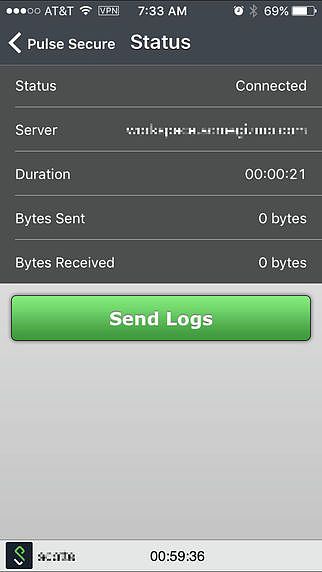Installing or Upgrading Pulse for Apple OS X with a Branding Package
To apply the branding package changes to an Apple OS X endpoint, you must copy the necessary files to an OS X endpoint and use them to update the Pulse installation program. You can also use this process to add Pulse configurations (a .pulsepreconfig file) to the Pulse installation program. You can then use that Pulse installation program to install or update Pulse on OS X endpoints. If the specified branding package is present in the Pulse installation program, the installation process creates the following directory:
Open Pulse Secure. You may do this in one of two ways. Either navigate to your Applications folder and locate Pulse Secure, or select the Pulse Secure icon in the menu bar at the top of your display and then select Open Pulse Secure.; Select the Plus button to open a new connection.; Enter the following VPN connection information and then select Add to save the connection. Pulse Secure recommends that customers deploy the latest version of Pulse Secure software for their use case and to include password update frequency.
/Library/Application Support/Pulse Secure/PulseBranding

The PulseBranding directory holds the changes you made to Pulse resource files and graphics. When Pulse must access a resource file, it checks this directory first.
To add PulseMac.PulseBranding to PulseSecure.dmg, perform the following steps on an OS X endpoint:
- Create a directory on an OS X endpoint and copy the following files to it:
- PulseMac.PulseBranding—The file created for OS X by BrandPackager that contains all of your client customizations. After you edit the resource files and run BrandPackager, PulseMac.PulseBranding is available in the same directory as BrandPackager.
- PulseSecure.dmg—The Pulse installation program. You can download PulseSecure.dmg from the Downloads page of Pulse Connect Secure or Pulse Policy Secure.
- ConfigureInstaller—A Python script that adds the package file to PulseSecure.dmg. ConfigureInstaller is available in the same directory as BrandPackager. Python is part of OS X 10.2 and greater and is included in the system PATH.

- Open a terminal window and make the directory that holds ConfigureInstaller your current directory.
- Run ConfigureInstaller. You can run ConfigureInstaller with no options to see the command summary:
python ./ConfigureInstaller
Pulse Secure 9.1.3 Dmg
usage -s <source dmg> -b <brandingfile> -c <configfile> -t <target dmg>
usage -s <source dmg> -b <brandingfile> -t <target dmg>
Pulse Secure Macos Dmg
usage -s <source dmg> -c <configfile> -t <target dmg>
The following example shows a command for adding a branding file and a Pulse config file to the Pulse installation program:
python ./ConfigureInstaller -s PulseSecure.dmg -b ~/Staging/PulseMac.PulseBranding -c ~/Staging/myfile.pulsepreconfig-t PulseSecure-new.dmg
Pulse Secure Dmg Download
When the operation completes successfully, the new Pulse installation program is ready for use.
For complete information on creating preconfigured Pulse connections and installing Pulse Secure client, see the Pulse Secure documentation.
Pulse Secure Dmg
Related Documentation